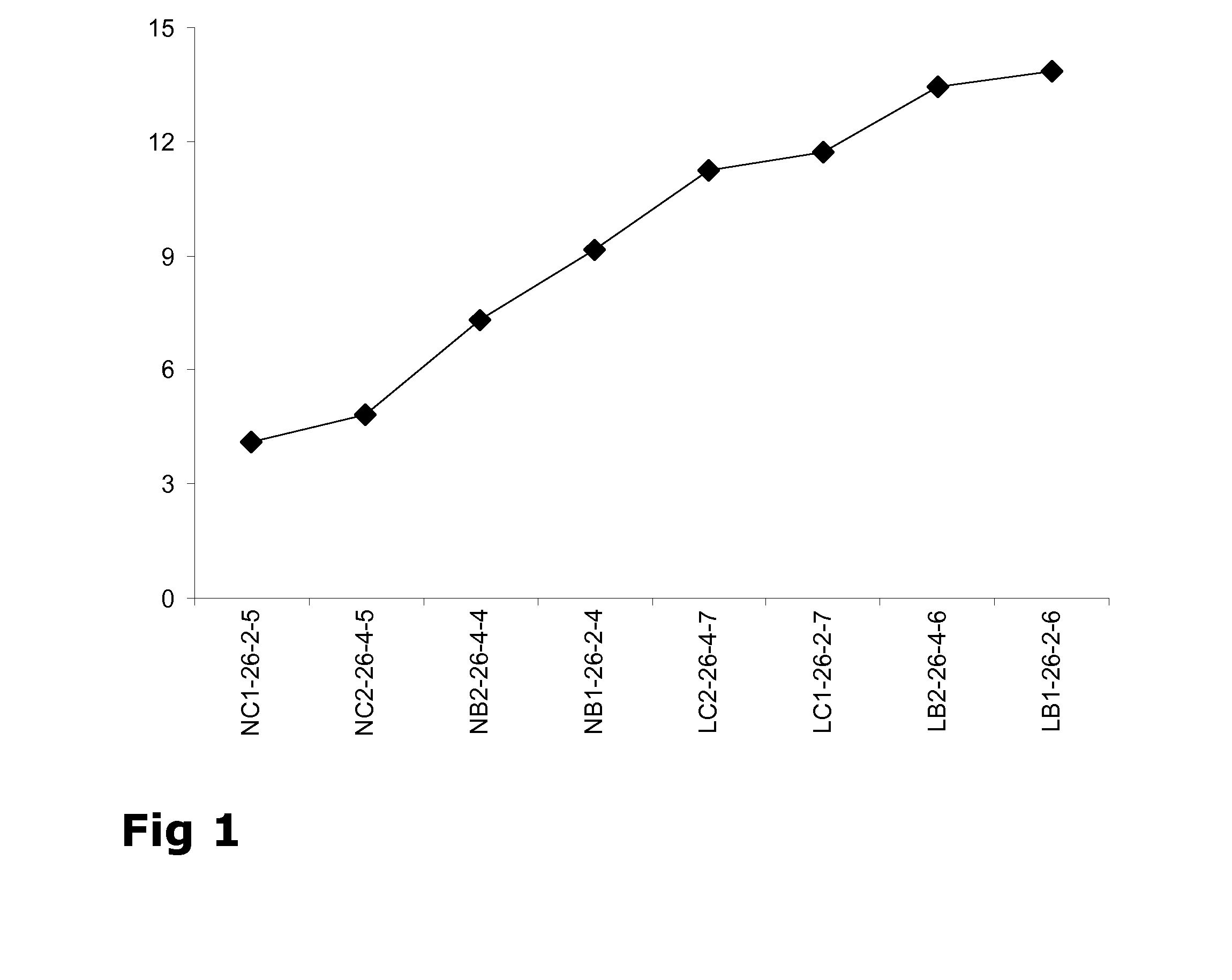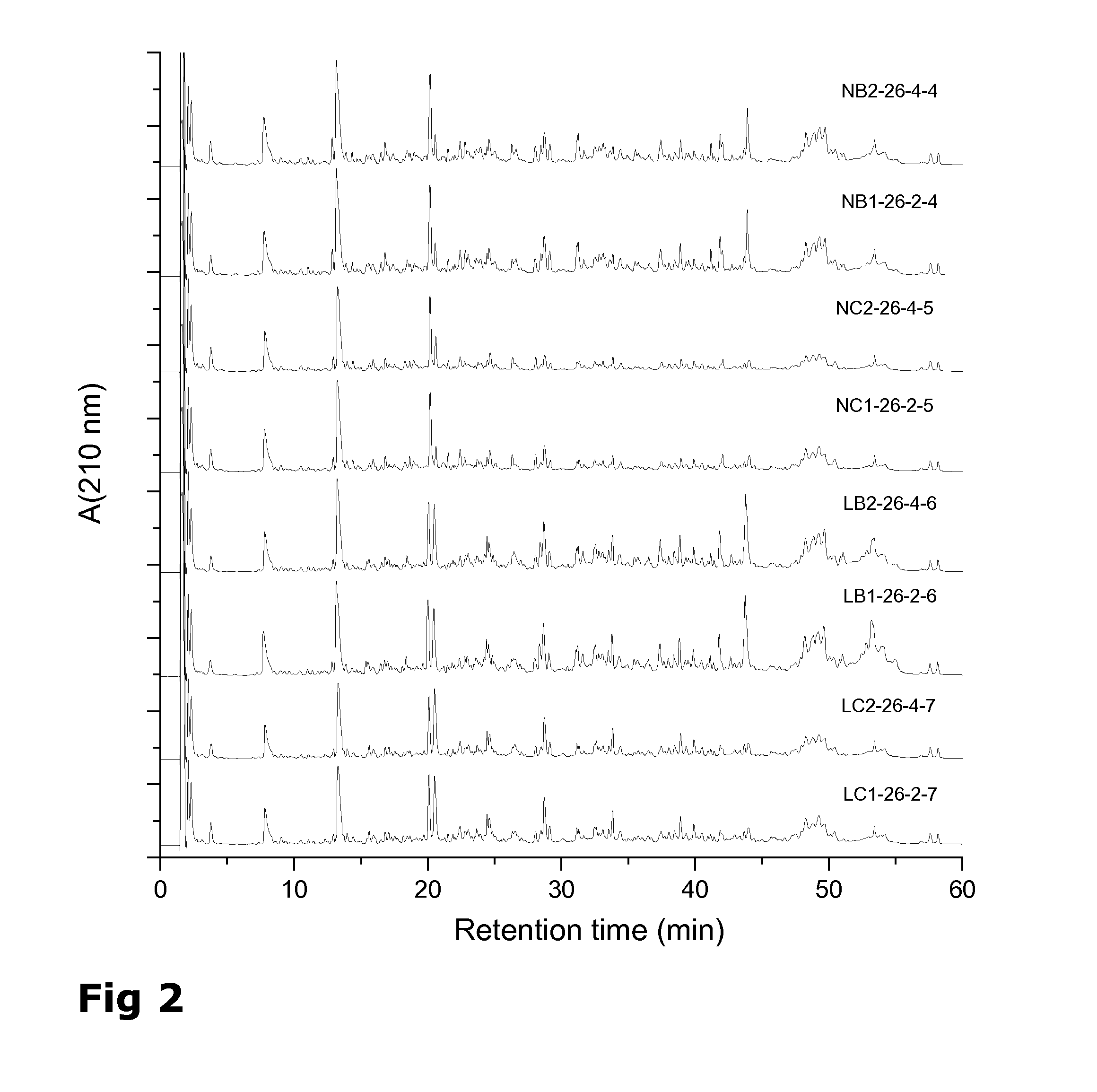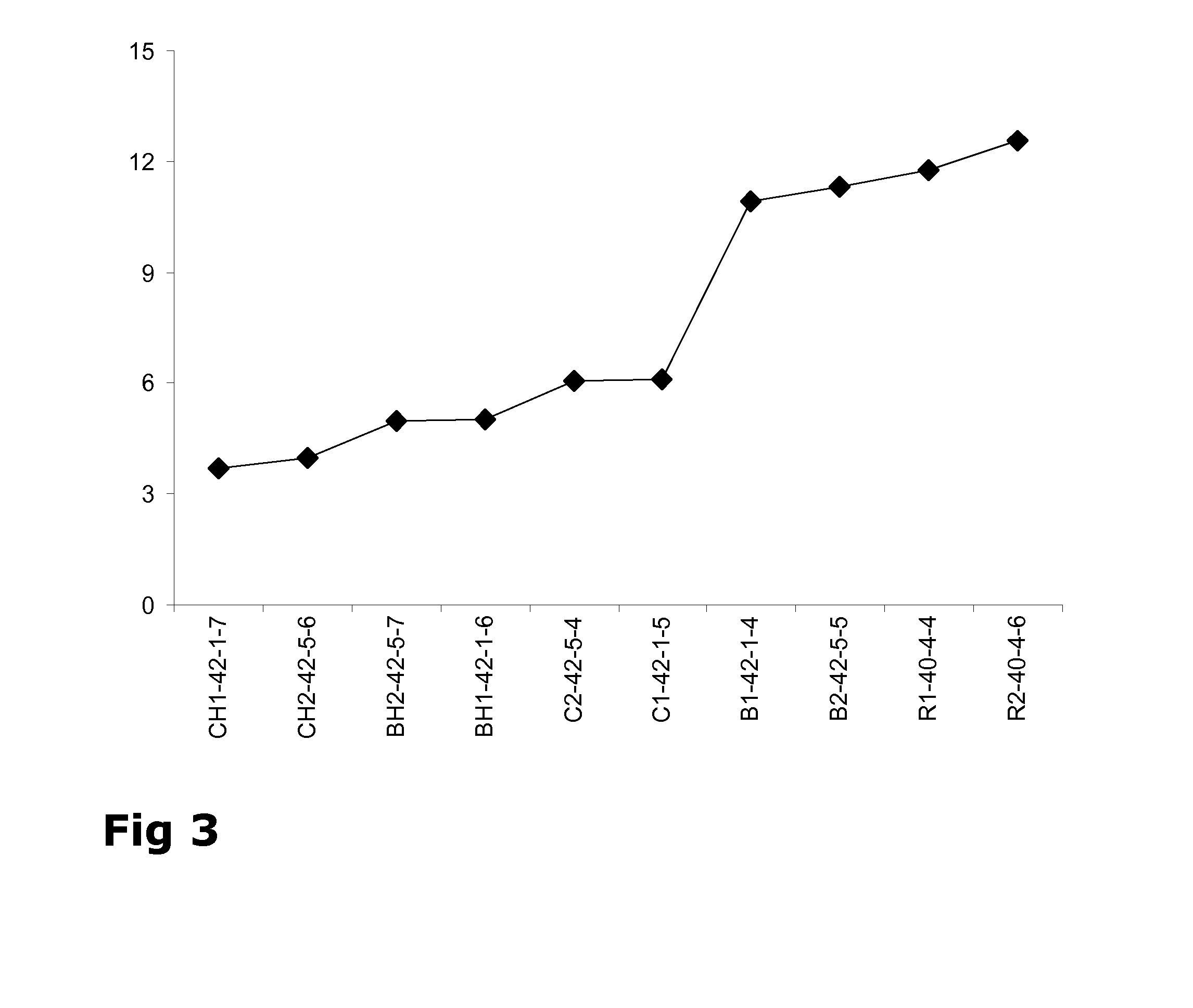Method for making cheese
- Summary
- Abstract
- Description
- Claims
- Application Information
AI Technical Summary
Benefits of technology
Problems solved by technology
Method used
Image
Examples
example 1
Screening for GAD-Negative Strains
[0115]Strains were screened based on their inability to decarboxylate glutamate by measuring the levels of γ-amino butyric acid (GABA) and glutamate following growth in milk. Two g of frozen culture pellets was dispersed into 200 g of double boiled 9.5% reconstituted skimmed milk. A 0.01% final inoculation rate was prepared by taking 2 g of this dispersion and inoculating into 200 g of double boiled 9.5% reconstituted skimmed milk, previously spiked with 1 mM glutamate (spiking was performed by the addition of 2 mL of a 100 mM glutamate solution to 200 g of 9.5% reconstituted skimmed milk). The cultures were incubated at 30° C. for Lc. lactis and 37 C for Lb. helveticus for 72 hours. After incubation 1.0 g of fermented skim milk was mixed with 1.0 mL of 4% (w / v) TCA and the samples were mixed, and left stand at room temperature for 30 min. The samples were then centrifuged at 15,000×g for 20 min at 4° C., and 1 mL of supernatant was transferred into...
example 2
Production of Normal-Salt and Low-Salt Cheddar Cheeses with Reduced Bitterness
[0120]All cheeses were manufactured in duplicate. A normal level of salt was defined as 1.8% (w / w) and low-salt cheese was defined as 0.8% (w / w).
[0121]The trial was set-up according to Table 4, wherein the starter culture is the GAD-positive F-DVS R-604 (Chr. Hansen).
TABLE 4Salt and coagulant variablesCheese IDSalt levelCoagulant1NB1-26-2-4NormalBovineNB2-26-4-4(1.8% (w / w))chymosin2NC1-26-2-5NormalCamel NC2-26-4-5(1.8% (w / w))chymosin3LB1-26-2-6LowBovineLB2-26-4-6(0.8% (w / w))chymosin4LC1-26-2-7LowCamel LC2-26-4-7(0.8% (w / w))chymosin1. Normal-salt cheese made with bovine chymosin as coagulant (NB1-26-2-4, NB2-26-4-4)2. Normal-salt cheese made with camel chymosin as coagulant (NC1-26-2-5, NC2-26-4-5)3. Low-salt cheese made with bovine chymosin as coagulant (LB1-26-2-6, LB2-26-4-6)4. Low-salt cheese made with camel chymosin as coagulant (LC1-26-2-7, LC2-26-4-7)
[0122]Cheddar cheese-making trials were undertaken...
example 3
Production of Low-Salt Cheddar Cheese with Reduced Bitterness and Increased Flavor Intensity
[0131]All cheeses were manufactured in duplicate. A low-salt cheese was defined as 0.8% (w / w). The trial was set-up according to Table 6.
TABLE 6Starter culture, adjunct culture and coagulant variablesCheese IDStarter cultureAdjunct cultureCoagulant1R1-40-4-4GAD-positivenoneBovineR2-40-4-6(F-DVS R-604, Chr. Hansen) chymosin2B1-42-1-4GAD-negativenoneBovineB2-42-5-5(F-DVS)chymosin3C1-42-1-5GAD-negativenoneCamelC2-42-5-4(F-DVS)chymosin4BH1-42-1-6GAD-negativeLb. helveticusBovineBH2-42-5-7(F-DVS)(F-DVS LH-32, chymosinCHr. Hansen)5CH1-42-1-7GAD-negativeLb. helveticusCamelCH2-42-5-6(F-DVS)(F-DVS LH-32, chymosinChr. Hansen)1. GAD-positive starter culture and bovine chymosin as coagulant (R1-40-4, R2-40-4-6)2. GAD-negative starter culture and bovine chymosin as coagulant (B1-42-1-4, B2-42-5-5)3. GAD-negative starter culture and camel chymosin as coagulant (C1-42-1-5, C2-42-5-4)4. GAD-negative starter, ...
PUM
 Login to View More
Login to View More Abstract
Description
Claims
Application Information
 Login to View More
Login to View More - R&D
- Intellectual Property
- Life Sciences
- Materials
- Tech Scout
- Unparalleled Data Quality
- Higher Quality Content
- 60% Fewer Hallucinations
Browse by: Latest US Patents, China's latest patents, Technical Efficacy Thesaurus, Application Domain, Technology Topic, Popular Technical Reports.
© 2025 PatSnap. All rights reserved.Legal|Privacy policy|Modern Slavery Act Transparency Statement|Sitemap|About US| Contact US: help@patsnap.com



